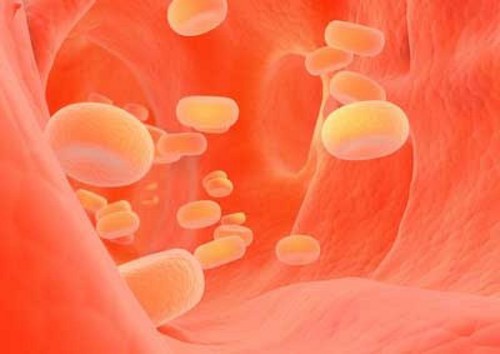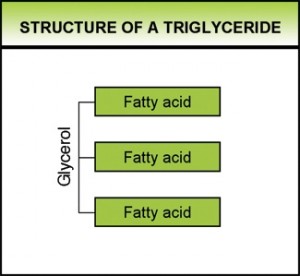 We hear about it in commercials for everything from Cheerios to butter spreads. It’s cholesterol and although our bodies need it to function properly, too much cholesterol can lead to problems like atherosclerosis and hearth disease.
We hear about it in commercials for everything from Cheerios to butter spreads. It’s cholesterol and although our bodies need it to function properly, too much cholesterol can lead to problems like atherosclerosis and hearth disease.
But what exactly is cholesterol, and how does it impact your health? Cholesterol is a waxy, fat-like substance that is made in the liver. Cholesterol is vital for maintaining cell walls, making hormones, and is also necessary for manufacturing bile, and vitamin D.
Sometimes, however, our bodies produce more cholesterol than we really need or we can take in too much cholesterol through our diet. This excess cholesterol circulates in the bloodstream and clogs blood vessels increasing the risk for heart disease and stroke.
LDL Cholesterol
Cholesterol can’t dissolve in the blood. It has to be transported to and from the cells by carriers called lipoproteins. Low-density lipoprotein (LDL) is known as “bad” cholesterol. When the too much LDL circulates in the blood, it builds up a “plaque” in the arteries. This hardening of the arteries is called atherosclerosis, and this can also lead to a heart attack or stroke.
Foods that contain high levels of low density lipoproteins are those rich in animal fats, including hydrogenated fats found in cakes, pastries, biscuits, and full fat dairy products like cream, cheese, ice cream, and butter. Eating a diet high in saturated fats is a key component to having high cholesterol.
Now you could be saying, “I don’t eat a high fat diet and I still have high cholesterol.” This is entirely possible. There are people who exercise regularly, eat a well-balanced, low fat diet, and still have a high level of LDL cholesterol in their blood. Hereditary factors can play a role in cholesterol levels. It’s important to discuss you cholesterol level and all of your risk factors with your doctor.
Raising Your High Density Lipoprotein
High-density lipoprotein (HDL) is known as the “good cholesterol.” High levels of HDL appear to prevent against heart attacks and some experts believe it may also excess cholesterol from building up within the arteries. People who have levels of low levels of HDL, less than 40 mg of HDL, have an increased risk of heart attack.
You can raise your HDL cholesterol with some simple lifestyle modifications. Including aerobic exercise in your daily routine will increase your HDL levels. It’s also important to note that in obesity was one cause of low HDL levels, so weight loss can also impact HDL levels for people needing to lose significant amounts of weight.
It’s also a good idea to increase the amount of monosaturated fats in your diet. These are found in canola oil, olive oil, avocado oil and peanut butter. There is also rapeseed oil and a huge variety of nuts and seeds. As a bonus, studies have shown that healthy levels of cholesterol may also offer antioxidant benefits.
Adding soluble fiber to you diet is another way to increase your HDL cholesterol and lower your LDL cholesterol at the same time. Soluble fibers are found in foods like oats, fruits, vegetables, and legumes. Another great reason to eat your fruits and veggies!
The Other Cholesterol – Triglycerides
 Triglycerides are the chemical form in which most fat exists in foods as well as in the body. Triglycerides in plasma are derived from fats eaten in foods or made in the body from other energy sources like carbohydrates.
Triglycerides are the chemical form in which most fat exists in foods as well as in the body. Triglycerides in plasma are derived from fats eaten in foods or made in the body from other energy sources like carbohydrates.
Trigylcerides are very important in controlling the metabolism of energy and transporting dietary fat. They split into free fatty acids and monoacylglycerol through the process known as lipolysis. Then they mix with bile and lipases and move to the enterocytes—the cells which line the intestines.
Trigylcerides then rebuild in these cells and transport to the proteins and cholesterol to form chylomicrons, which transport external lipids to skeletal muscle tissue, liver, and adipose tissue before mixing into the blood. Triglycerides can easily be broken down into energy via the hormone, glycagon.
High levels of trigylcerides in the human body can cause atherosclerosis, and increase the risk of stroke and/or heart disease. If your levels of triglycerides are high, try to consume a high number of monosaturated fats to raise the healthy levels of cholesterol (HDL).
What is a Healthy Level of Cholesterol?
The lower the levels of Low Density Lipoproteins, the less at risk the body is of heart related disorders, but what is a healthy level of cholesterol? In the US, the current levels of cholesterol in the body is measured in milligrams (mg) of cholesterol per deciliter (dl) of blood.
| Total Cholesterol Levels in US | LDL Cholesterol Levels in US | HDL Cholesterol in US | Triglycerides Cholesterol in US |
| Desirable: Under 200mg/dl | Desirable level for those at very high risk: Under 70 mg/dl | Healthy level: 60 mg/dl + | Healthy level: Under 150 mg/dl |
| Medium high: 200-239 mg/dl | Healthy level for those at risk of atherosclerosis or heart disease: Under 100 mg/dl | Above average: 50-59 mg/dl | Medium high: 150-199 mg/dl |
| Dangerously high: 240 mg/dl + | Healthy level: 100-129 mg/dl | Unhealthy level for men: Under 40 mg/dl | High: 200-499 mg/dl |
| LDL cholesterol | Medium High: 130-159 mg/dl | Unhealthy level for women: Under 50 mg/dl | Dangerously high: 500 mg/dl + |
| High: 160-189 mg/dl | |||
| Dangerously high: 190 mg/dl + |
The High Risk Group
 Those at risk of atherosclerosis or heart disease fall into this ‘high risk’ category:
Those at risk of atherosclerosis or heart disease fall into this ‘high risk’ category:
- If you have previously suffered a stroke or heart attack
- Smokers
- Individuals who suffer with hypertension (high blood pressure)
- Sufferers of Peripheral Artery Disease (artery blockages in the arms/legs)
- Sufferers of Carotid Artery Disease (artery blockages in the neck)
- Low levels of High Density Lipoproteins, or those who consume too many animal proteins/hydrogenated fats
- Sufferers of diabetes
- If early heart disease runs in the family
- Individuals who suffer with elevated lipoproteins
- If you are a man over the age of 45, or a woman over the age of 55.
Cholesterol is important to the body, but when it grows to dangerous levels, it is better to visit your physician for a test. The best way to prevent heart disease, atherosclerosis, and stroke is to find out the current level of cholesterol in your blood.
To reduce your risk of these ailments, lower your levels of the unhealthy Low Density Lipoproteins (LDL), raise your levels of the healthier High Density Lipoproteins (HDL), and reduce the levels of triglycerides in the blood.